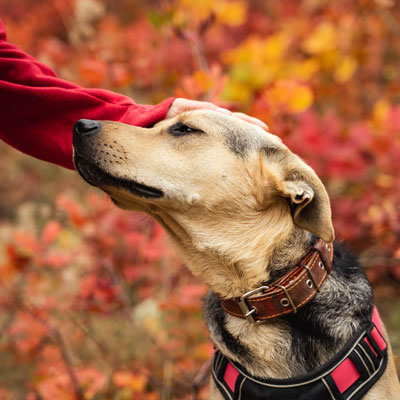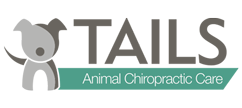
As a veterinary chiropractor specializing in performance animals, I’ve seen extraordinary transformations in athletes of all species. Animal chiropractic isn’t just about treating back pain – it’s about optimizing the musculoskeletal and nervous systems to help these incredible athletes perform at their peak.
Think of your performance animal’s body as a finely tuned racing car. Just as a race car needs regular tune-ups for optimal performance, your athletic companion benefits from regular chiropractic adjustments to maintain peak condition. We focus on enhancing biomechanics and neuromuscular function through precise, specialized techniques.
The Power of Qualified Care
When seeking chiropractic care for your performance animal, certification matters. Look for practitioners certified by the American Veterinary Chiropractic Association (AVCA) or the International Veterinary Chiropractic Association (IVCA). These credentials ensure your animal athlete receives care from someone who understands chiropractic principles and animal biomechanics.
Enhanced Performance and Movement: The Game-Changer
Range of Motion and Flexibility
Have you ever watched a horse execute a perfect dressage movement or a dog weave through agility poles with grace? That’s an optimal range of motion in action. Through regular chiropractic care, we help:
- Increase joint mobility naturally
- Enhance muscle flexibility
- Reduce the risk of strains and sprains
- Improve overall movement patterns
Gait and Stride Efficiency
Our practice has seen remarkable improvements in stride length and efficiency. A properly aligned spine and balanced musculature lead to:
- More powerful movement
- Better speed and agility
- Enhanced endurance
- Smoother gaits
Balance and Coordination
Just as an Olympic gymnast needs precise body awareness, your performance animal requires exceptional proprioception. Our adjustments help enhance:
- Body awareness
- Balance control
- Agility in complex maneuvers
- Overall coordination
Injury Prevention: An Ounce of Prevention
Maintaining Proper Spinal Alignment
Picture your animal’s spine as a bridge – when all supports are properly aligned, it can bear tremendous loads safely. Regular adjustments help:
- Reduce joint stress
- Minimize ligament strain
- Prevent muscle imbalances
- Support optimal posture
Identifying Early Warning Signs
Our experienced eyes catch subtle biomechanical imbalances before they become problems. We look for:
- Leg length discrepancies
- Postural abnormalities
- Muscle imbalances
- Movement compensations
Species-Specific Care
Equine Athletes
Whether you have a dressage champion or a racing thoroughbred, each discipline requires specific attention. We commonly work with:
Dressage Horses:
- Improving spinal flexibility for better collection
- Enhancing lateral movement capability
- Supporting proper neck carriage
Show Jumpers:
- Optimizing takeoff mechanics
- Improving landing absorption
- Enhancing back strength
Race Horses:
- Maximizing stride length
- Improving speed potential
- Supporting cardiovascular efficiency
Working Dogs
From agility champions to service dogs, our canine athletes require specialized care:
Agility Dogs:
- Enhanced turning ability
- Improved jumping mechanics
- Better contact obstacle performance
Police/Military Dogs:
- Increased endurance
- Better recovery after intense activity
- Improved physical resilience
Herding Dogs:
- Enhanced stamina
- Better quick-direction changes
- Improved overall coordination
The Adjustment Process
Initial Assessment
Your performance animal’s first visit includes:
- Comprehensive movement evaluation
- Detailed gait analysis
- Muscle and joint palpation
- Performance history review
Adjustment Techniques
We use various techniques adapted for different species:
For Horses:
- Toggle Recoil for precise adjustments
- Specialized equine adjusting tools
- Modified hand techniques for larger joints
For Dogs:
- Activator Methods for gentle corrections
- Manual adjustments tailored to size
- Sport-specific therapeutic approaches
Integration with Other Therapies
We believe in a comprehensive approach to performance enhancement. Chiropractic care works beautifully alongside:
- Massage therapy
- Acupuncture
- Physical therapy
- Hydrotherapy
This integrated approach maximizes results and supports long-term athletic success.
Long-Term Benefits
Regular chiropractic care helps:
- Maintain peak performance throughout competitive seasons
- Prevent age-related decline
- Support career longevity
- Enhance the overall quality of life
At Tails Animal Chiropractic Care, we understand that every performance animal is unique. Our team of certified animal chiropractors combines extensive experience in sports medicine with advanced chiropractic techniques to help your animal athlete achieve their full potential.
Ready to optimize your performance animal’s abilities? Contact us today to schedule a comprehensive evaluation. We’ll create a care plan tailored to your athlete’s needs and goals.
Frequently Asked Questions
How are chiropractic adjustment techniques adapted for performance animals like horses and dogs?
For equine patients, adjustments often involve more significant movements and may utilize specialized equipment like adjusting tools or tables to accommodate their size and weight, focusing on spinal segments like the atlanto-occipital joint and sacroiliac joint; in contrast, canine adjustments are typically more localized and utilize manual techniques tailored to their smaller size and specific joint structures like the stifle or carpus. These adaptations ensure safe and effective treatment across species.
How do chiropractic adjustments specifically improve biomechanical efficiency in performance animals?
Chiropractic adjustments improve biomechanical efficiency by restoring proper joint motion and reducing restrictions in the spine and extremities; this leads to improved limb coordination during activities like galloping in horses or jumping in dogs, enhanced spinal flexibility during complex movements, and optimized power transfer during athletic exertion.
What are some specific signs of musculoskeletal issues that owners/trainers should look for in performance animals?
In horses, signs may include shortened stride length, uneven gait, reluctance to collect or perform specific movements, and sensitivity to palpation of the back; in dogs, signs can include limping, stiffness after exercise, reluctance to jump or climb stairs, and changes in posture like a hunched back. Recognizing these signs can prompt owners to seek veterinary care, including chiropractic.
How does chiropractic care benefit specific performance animal disciplines like dressage or agility?
In dressage horses, chiropractic care can improve spinal flexibility and range of motion, which is crucial for performing complex movements like collection and lateral work; for agility dogs, chiropractic adjustments can optimize joint function and proprioception, enhancing their ability to navigate obstacles quickly and accurately, reducing the risk of injuries during tight turns and jumps.
What are the long-term benefits of regular chiropractic care for performance animals?
Regular chiropractic care can help maintain peak performance throughout an animal’s career by preventing injuries, optimizing biomechanics, and managing age-related changes in joint health; this proactive approach can extend the animal’s performance lifespan and contribute to their overall well-being in their later years.
